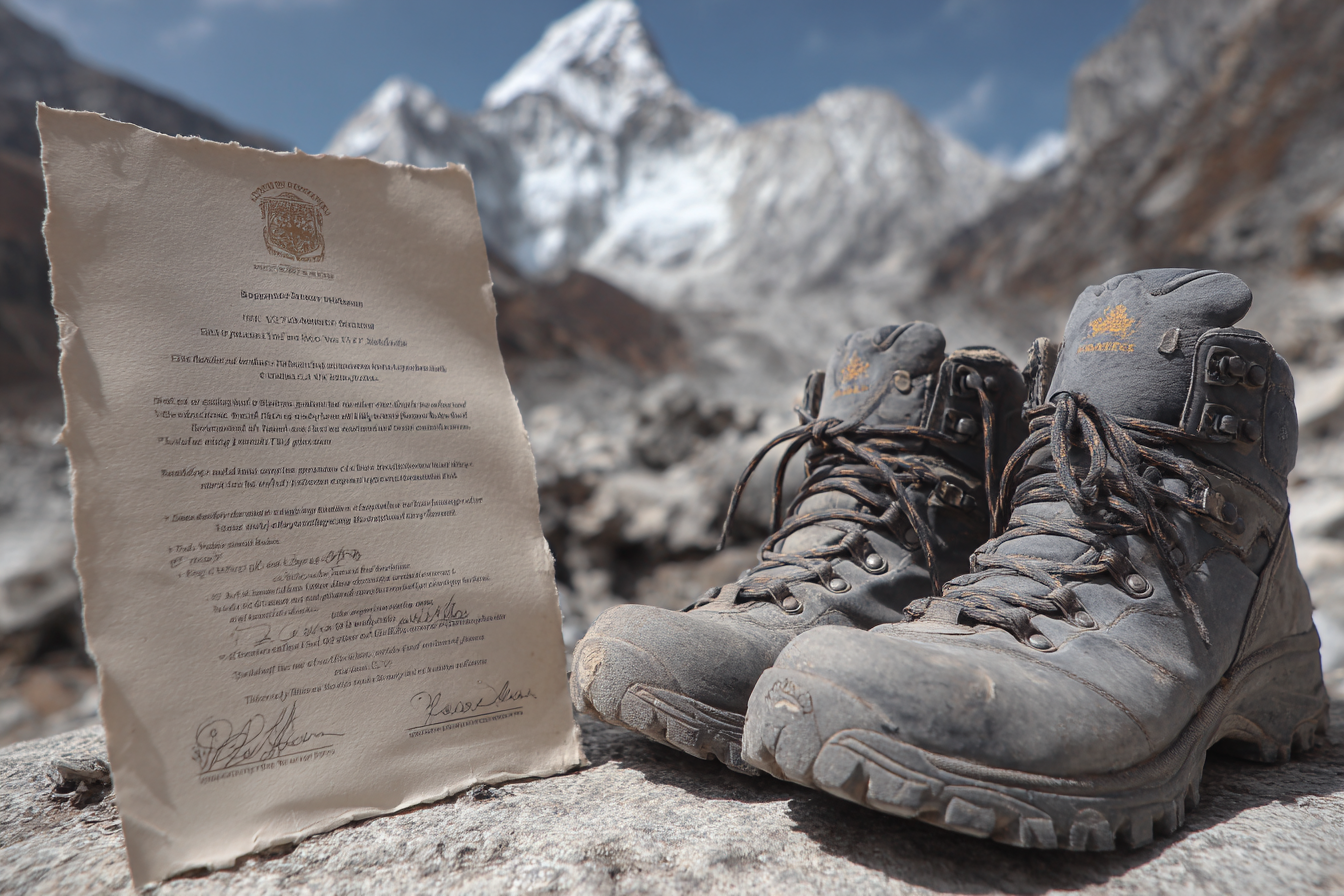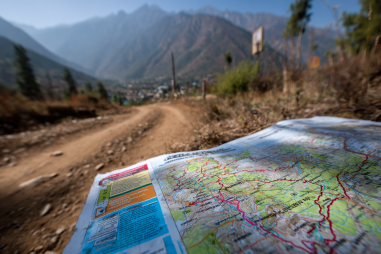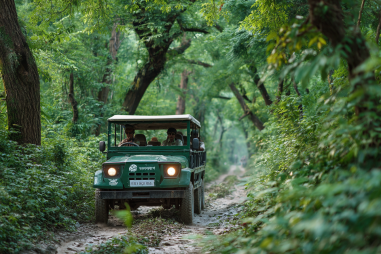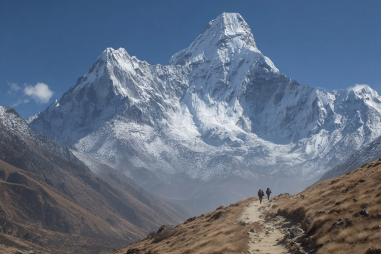Trekking to Everest Base Camp is a dream for many adventure enthusiasts and nature lovers across the globe. However, before you embark on this breathtaking journey through the Himalayas, it is essential to secure the right trekking permits. These permits are not only legal requirements but also help regulate tourism and conserve the fragile ecosystem of the region. In this guide, we’ll walk you through everything you need to know about Everest Base Camp trekking permits — from types of permits and how to apply to rules you must follow and potential consequences for non-compliance.
Overview of Required Permits: TIMS and Sagarmatha National Park Permit
When trekking to Everest Base Camp, there are two primary permits you need to obtain:
- Trekkers’ Information Management System (TIMS) Card: This is an identification card issued by the Nepal Tourism Board. The TIMS card is designed to keep track of trekkers entering popular trekking regions and ensures their safety. It is mandatory for all trekkers in popular areas, including the Everest region.
- Sagarmatha National Park Permit: Since Everest Base Camp lies within Sagarmatha National Park, which is a UNESCO World Heritage Site, every trekker must obtain this park entry permit. The permit helps protect the environment and wildlife within the park, regulating tourism responsibly.
Step-by-Step Application Process
Applying for your trekking permits is straightforward, and can be done in person or through authorized trekking agencies. Here’s how to secure your permits step-by-step:
- Prepare Necessary Documents: You will need a valid passport, passport-sized photos, and sometimes a copy of your trek itinerary if applying through an agency.
- Visit the Nepal Tourism Board or Authorized Agency: TIMS cards can be obtained at the Nepal Tourism Board office in Kathmandu or Pokhara. Sagarmatha National Park permits are generally issued at the park entrance or can be procured beforehand through agencies.
- Fill Out Application Forms: Complete any required application forms for both the TIMS card and the national park permit.
- Pay Relevant Fees: Make the necessary payments, either in cash at the office or via electronic means if available.
- Receive Permits: After processing, you will receive your TIMS card and Sagarmatha National Park permit, which you should carry throughout your trek.
Most trekkers opt to have their trekking agencies manage these permits to simplify the process, especially if they are unfamiliar with local procedures or short on time.
Fees and Payment Methods
The costs associated with Everest Base Camp trekking permits can vary based on your nationality and the point of purchase (inside or outside Nepal). Here is a typical breakdown:
- TIMS Card: Approximately $10 USD for individual trekkers and $20 USD for trekkers with organized groups.
- Sagarmatha National Park Permit: Roughly $30 USD for foreign nationals, valid for 10 days to 3 weeks (you may need to renew for longer treks).
Payments can usually be made in cash (Nepalese Rupees or USD) at permit offices. Some trekking agencies accept bank transfers or credit card payments when arranging permits on behalf of trekkers.
Rules and Regulations for Trekkers
Having the correct permits is just part of responsible trekking in the Everest region. Trekking authorities enforce several rules to protect the environment and ensure safety:
- Permit Display: Always carry your TIMS and Sagarmatha National Park permits with you and present them at checkpoints.
- Respect Wildlife and Environment: Do not disturb animals or plants, and avoid littering along the trails.
- Designated Trails: Stick to marked paths to minimize erosion and impact on natural habitats.
- Trek Duration Compliance: Abide by the validity period of your permits and renew if necessary to avoid fines.
- Camping Restrictions: Camping is only allowed in designated areas to reduce environmental damage.
Following these regulations helps preserve the region’s natural beauty and ensures that trekking remains sustainable for future visitors.
Checking for Permit Authenticity
Unfortunately, fake trekking permits can sometimes be an issue for naive or rushed trekkers. Here are tips to verify the authenticity of your permits:
- Purchase Through Official Channels: Always obtain permits from Nepal Tourism Board offices or reliable trekking agencies.
- Inspect Permit Details: Authentic permits will include clear stamps, official logos, your details, and validity dates.
- Cross-Check at Checkpoints: Timely presentations of permits at park entrances and police checkpoints ensure your documents are accepted and verified.
- Seek Clarification: If anything seems suspicious, ask the issuing office or your tour operator for confirmation.
Updates and Changes in Regulations
Authorities in Nepal periodically update trekking permit regulations to address environmental concerns and manage the increasing number of visitors. It’s wise to stay informed about any new developments:
- Permit fee adjustments reflecting inflation or conservation funding needs.
- Modifications to permit validity periods and renewal processes.
- Introduction of new eco-friendly policies or additional permits.
- Enhanced safety or health requirements, especially in response to global events.
You can keep updated by checking the official Nepal Tourism Board website or consulting your trekking agency before starting your trek.
Consequences of Trekking Without Permits
Trekking without the required permits is illegal and carries several potential penalties, which can significantly disrupt your journey:
- Fines: Authorities can impose monetary fines ranging from moderate to hefty amounts depending on the violation.
- Detention: Police or park officials may detain trekkers violating permit regulations until issues are resolved.
- Forced Evacuation: You might be asked to leave the trekking route immediately, possibly incurring additional costs.
- Impact on Future Permits: Non-compliance could affect your ability to obtain permits for future trekking trips in Nepal.
To avoid such issues, it’s crucial to secure all required permits well before your adventure begins.
Ensuring a Smooth and Compliant Trek
Obtaining and adhering to the rules surrounding Everest Base Camp trekking permits is a vital step in your adventure planning. These permits not only fulfill legal requirements but also contribute to the conservation of one of the world’s most incredible natural landscapes. By preparing your documents properly, respecting all rules, and staying alert to updates or changes, you’ll enjoy a safe, rewarding, and responsible trek high in the Himalayas. Remember, the journey to Everest Base Camp is as much about preserving the region as it is about personal achievement.







